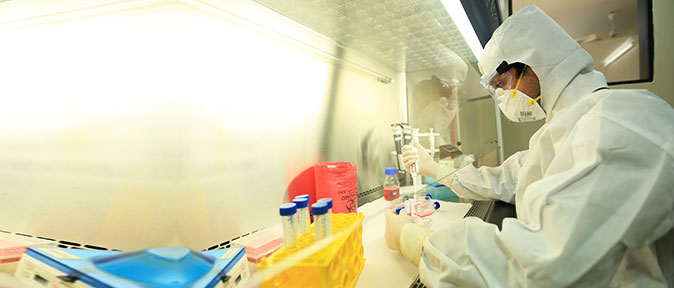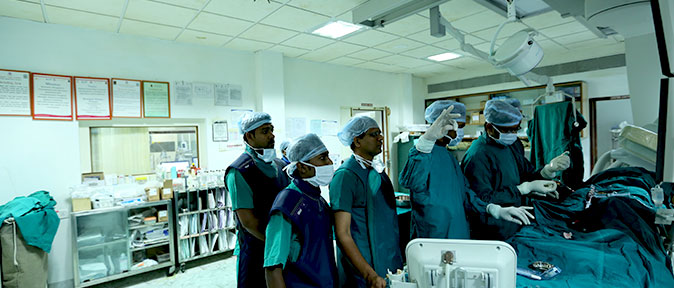Overview
1. The duration of the Fellowship is 12 months. ONE candidate will be selected each year. The objective of this Fellowship is to train young Orthopaedic surgeons to deal with Orthopaedic problems of spine effectively. There is a need to improve the quality of care of spinal conditions in India. This can only be achieved if more surgeons are trained in this field.
Eligibility: Minimum 2 years’ experience after MS Orthopaedics/DNB Orthopaedics/MCh Neurosurgery. The selection procedure would be as approved by the selection committee of Manipal Academy of Higher Education which includes the Co-ordinator of the training. There will be a fee as per the norms of the university and candidate will be given stipend. Last date to apply: Nov 30 of every year, Course commencement date: Jan 1 of every year.
It is envisaged that at the end of the period of training the candidate would have acquired the following clinical skills:
- To become conversant with a logical approach to the diagnosis
- To diagnose, evaluate and effectively plan treatment for the common spinal conditions
- To undertake a comprehensive evaluation of patients with Congenital Scoliosis and Neuromuscular scoliosis
- To be conversant with the prescribing, measuring and checking the fitting of various spinal orthoses
- To effectively perform the following diagnostic and therapeutic procedures: Transforaminal injection of steroid, vertebroplasty, closed vertebral biopsy
- To be competent to perform surgical drainage of spinal infection, spinal decompression, basic spinal stabilizations etc. by the end of twelve months.
2. Syllabus:
- Approaches to Spine – Occipito-Cervical, Subaxial, Thoracic, Lumbar, & Lumbosacral spine
- Basic osteology of spine – C1 – C2, Subaxial C-spine, Thoracic Spine, Lumbar, Sacrum.
- Basic Radiology of Spine.
- Basic Sciences – Disc anatomy, Spinal cord anatomy, Biomechanics of spine
- Spinal instrumentation – Basics (Screw designs, hook designs, Bone cement, growth rods, Vertebral tethering, Stapling, Artificial disc replacement etc.,)
- Metallurgy basics, Biomechanics and Applications.
- Functional / Scoring Systems in spine – Overview of importance of various scoring systems in different pathologies, validity and reliability such as ODI, SF-36, JOA score, etc
- The Pharmacologic Management of Spine Pain – axial and/or radicular
- Therapeutic Exercises for Low Back Pain and Neck Pain
- Bone Graft Substitutes – Concept of Bone healing, Bone graft substitutes
- Initial evaluation of polytrauma including head injury
- Cervical Trauma – Basic review of classification systems, Evaluation, Management.
- Thoracolumbar Trauma – Basic review of classification Systems, Evaluation, Management.
- Spinal fusion – PLF, PLIF, TLIF, XLIF, 360 fusion – indications, techniques, pitfalls.
- Spondylolisthesis – classification systems, importance in management, pitfalls.
- Scoliosis – Congenital, Early onset, AIS, Neuromuscular, Syndromic, Paralytic, Adult deformity – Assessment, indications and management.
- Tuberculosis of Spine – conservative and operative.
- Osteoporotic Fractures – Overview with indications for cementing (Vertebro- or Kypho-Plasty)
- Spinal Dysraphism and Tethered cord syndrome
- CV junction anomalies and AC Malformations
- Syringomyelia and Arnold Chiari malformations
- Spinal cord tumors – Intradural Extramedullary and Intramedullary tumors
- Vertebral tumors – primary and secondary – evaluation and management
- Spinal Cord injury and Rehabilitation strategies/goals
- Cervical myelopathy – Options, pros, cons, recent trends
- Minimally invasive spinal surgery – indications and techniques
- Robotic assisted spinal surgery – indications and techniques
- Surgical Training:
- Posterior Lumbar discectomy
- Anterior Cervical discectomy
- Lumbar decompression +/- TLIF
- Thoracic and Lumbar pedicle screw insertion
- Lateral mass fixation
- Cervical cage and plate
- Cervical laminectomy
- Thoracic laminectomy
- Vertebral Cementing
- Deformity correction (as first Assistant)
- Osteotomy spine VCR/PSO/Ponte (as first assistant)
- Minimally invasive screw placement lumbar/thoracic (as first assistant)
- Anterior approaches thoracic/lumbar spine (as first assistant)
- Management of spinal fractures through appropriate instrumentations.
3. Attendance: Candidate is expected to be in Campus attending the hospital for 80% of the calendar year excluding casual leaves (as per norms) and MAHE declared Holidays.
4. Examination Pattern: There will be formative assessment by means of a checklist at 6 monthly intervals; End-Year Exam involves Two papers 100 marks each & one clinical exam out of 200 marks. There will be a requirement of logbook maintenance throughout the program.
5. No. of attempts: 2
6. Minimum Pass: 50% in theory and clinical
7. Reference list of books & journals:
Books:
- Campbells Operative Orthopaedics 14th Edition
- Bridwell and DeWald’s Textbook of Spinal Surgery 4th Edition
- Navigation and Robotics in Spine surgery by Dr. Alexander Vaccaro
- S. Das Manual on Clinical Surgery 15th Edition.
- McRae Clinical Orthopaedic Examination 6th Edition Neurology examination
- DeJong’s The Neurologic Examination 8th Edition
- Hoppenfield Orthopaedic Neurology 2 nd Edition
- Bickerstaff’s Neurological Examination 7th Adapted Edition Theory
- Rothman Simeone and Herkowitz’s - The Spine 7th Edition
- Exposures Surgical Atlas of Spinal Operations 2nd Edition
Journals: Asian Spine Journal, Spine, Global Spine Journal, European Spine Journal, Indian Spine Journal, The spine Journal, International Journal of Spine Surgery, Journal of Spine Surgery, JBJS Spine, North Americal Spine Society Journal
8. Collaborations with other departments Institutions:
- Internal: Department of Anatomy/ Kasturba Medical College, Manipal
- External: Manipal Hospital, Bengaluru, Ganga Hospital, Coimbatore (Under Consideration)
- International: Tohuku Central Hospital, Sendai, Japan (Under consideration)
9. Industry placements/Internships: Nil
10. Prospects & Placements: Medical College/Corporate Hospitals requiring a certified Spine surgeon.
Key Dates & Deadlines
30
Nov 30 25
Nov ' 25
Last date to Apply
01
Jan ' 26
Tentative Course Commencement Date
Indian Students Apply
Manipal Academy of Higher Education not only caters to one’s academic needs, but also lays emphasis on all-round development of its students.
International Students Apply
Manipal Academy of Higher Education not only caters to one’s academic needs, but also lays emphasis on all-round development of its students.
Indian Students Apply
Manipal Academy of Higher Education not only caters to one’s academic needs, but also lays emphasis on all-round development of its students.
International Students Apply
Manipal Academy of Higher Education not only caters to one’s academic needs, but also lays emphasis on all-round development of its students.
Duration
1 years
Facilties

Laboratories
The Department of Neurology has EEG/ENMG Labs.

Libraries
Libraries have excellent resources for reference and study

Hospitals
Teaching hospitals give students hands-on learning





